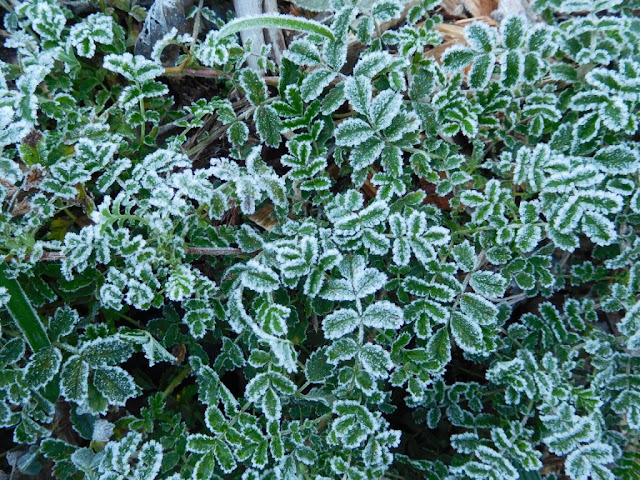`I’ve been given the gift of time’ says Ross wonderingly in TV series Friends (on moving apartments, and gaining a long
commute, on which he’s decided he can catch up on his reading). Perennial joker
Chandler: `Ah, if only I had the gift of space, we could get together and make
a continuum’.
I’ve just been away from the garden for 2 weeks and even in the depths,
and I mean icy, unexpected Antarctic vortex-cold depths of winter, there’s
changes to be seen.
But before I went away I decided to use this 2 weeks to see what changes
would occur. Would the gift of time show many changes?
Should I weed (well of course).
Should I plant? Pot up tiny treasures? Yes and yes.
Should I sow seeds in that cold, cold soil? Why not – let’s see what
happens. Well, of course no seeds germinated in the edible patch soil – not
yet, anyhow. But I learn a lot from not doing what the books say, and it may be
because my own garden has its own microclimate, water level, wind strengths,
and hours of sunlight; the latter a particular concern in my area of gum trees,
tall and...less tall.

Pea seeds went in; and sweet pea seeds I’d collected from a yummy smoky
blue: fresh seeds germinate best, so I’m hoping to see little leaves pop up any
day...ever the optimist. More broad bean and leek (all home collected) seeds
went in along with dwarf curly kale (great torn and sautéed for omelettes) and
also some little ruby chard seedlings that were sitting around needing a home. (Even
old purple bean seeds were left lying around the newly redug bush-bough
tripods; they’ll do their thing in spring.) The edible patch still looks a
little bare (I think the 2 week time machine works best in spring) but who know
what’s going on under the surface?
And the visible changes: hellebores/winter roses (Helleborus, top) were the big surprise, then peeking out, now
blooming their heads off in shades of white, pink, plum and lemon. They are scattered throughout the garden with
one or 2 Helleborus niger with
particularly large white flowers near the front door – in bud when I left, now
one bloom past from pristine white to gentle green.
Sweet little double snowdrops are adding to the chorus of other Galanthus, too. Some correas are putting
out apple-green chef’s caps flowers and – joy! – there’s enough jonquils to
pick a bunch. White Daphne is coated
with little flowers. (My daphne is green-leafed; I share many Australian’s
general aversion to variegated leaves (other than in hostas) although this is
slowly changing. I was amused when an international speaker said he wouldn’t use
the `V’ word at a landscape design conference some years ago.)
And the bush nearby? Surprisingly, not so many wattles, but heath (Epacris impressa, above) beaming out
like torches, in pinks pale and deep, and sometimes white; blooming before we
left, but, as more buds open to flowers, turning up the wattage while we were
away.
Salvias are still in bloom, mainly, but my other perennials have headed
south, hunched their shoulders, pulled their hoodies over their rootstocks and
glanced, in amazement, across at the daffodils pushing up flower stalks, and
they think `what crazy sorts of plants are those bulbs?’
Jill Weatherhead is horticulturist, writer, garden
designer and principal at Jill Weatherhead Garden Design who lives in
the Dandenong Ranges east of Melbourne, and works throughout Victoria (www.jillweatherheadgardendesign.com.au)
Addit. I should have asked David Tennant (the hottest of the time lords by
far (as River Song would say) – from Doctor
Who of course) to set my time machine to 2 ½ weeks. The gift of time
worked, almost: dwarf curly kale have sent up masses of little dicotyledons –
those first baby leaves – although as children of English seed I suspect they
are laughing at the weather - heartily.






